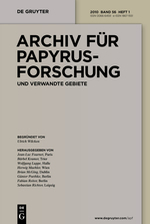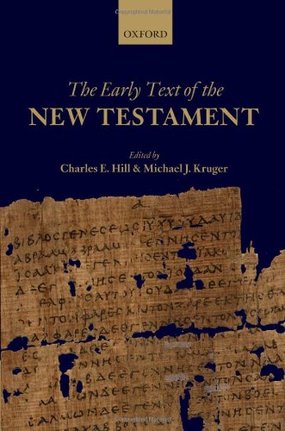
Richard S. Ascough, Philip A. Harland, John S. Kloppenborg (eds.). Associations in the Greco-Roman World: A Sourcebook. Waco: Baylor University Press, 2012. xxxviii + 394. Paperback. $39.95.
I would like to thank the kind folks at Baylor University Press for sending me a review copy of this book.
This book represents the first English-language sourcebook of Greco-Roman associations to-date. It is divided into three main sections: 1) Inscriptions and Papyri, 2) Buildings and Meeting Places, and 3) Literary References. There is a very brief introduction to the volume (just shy of 7 pages), an extensive annotated bibliography (82 pages), 31 illustrations (primarily images of inscriptions taken by one of the editors), and helpful indices. The editors note in the introduction that the book is not exhaustive; rather, the texts selected “are representative of a broad range of texts (e.g., decrees, dedications, regulations, graves), groups (e.g., occupational, ethnic, cultic), group memberships (e.g., citizen, noncitizen, male, female, mixed), and purposes (e.g., cultic, social, burial)” (3). The texts themselves were chosen primarily based “on areas where Christianity was present in the first and second centuries CE” (3), a result of the shared research interest in Christian origins between the editors. We learn in the acknowledgements that this sourcebook is related to but separate from the multivolume Greco-Roman Associations, to be published in the BZNW series by Walter de Gruyter. One of the main differences between the sourcebook being reviewed here and that larger work is comprehensiveness: the multivolume work will include texts in their original languages, full publication information, and comprehensive notes and commentary. However, the texts from Greco-Roman writers (section 3), descriptions of buildings and places (section 2), and the annotated bibliography are unique to the sourcebook.
The main section of the book (“Inscriptions and Papyri”) consists of English translations of 337 Greek and Latin inscriptions and papyri relating to some aspect of associations in the Greco-Roman world. The texts are listed according to geographic region (e.g., Southern and Central Greece, Macedonia, Thracia, etc.). Each entry is given a number followed by a brief description of the text, publication information, date, and a brief description, if available, of the material (e.g., type of marble, adornments, provenance). The editors have also employed the Packard Humanities Institute (PHI) internal numbering system, which will soon be implemented, thus making texts more easily accessible online. The translations of texts are clear, and frequent names for associations and associates are transliterated parenthetically (e.g., koinon, synodos, synergasia, eranistai, etc.) The figures (e.g., frescos, mosaics, reliefs, busts, graves and monuments) are also clear and provide historical depictions of associations or related themes as well as images of various repositories of texts.
Several spot checks using the Papyrological Navigator (www.papyri.info) and the PHI online epigraphy database (http://epigraphy.packhum.org) reveal that the editors have accurately translated the Greek texts (the predominant language of the materials). Unfortunately, however, the editors often translate substantial portions of reconstructed text from critical editions (i.e., text not preserved on the papyrus or inscription), yet they do not signify in the translation what is reconstructed. To take just one example, lines 5-7 of IG II2 1284 = GRA I 22 are transcribed as follows in the critical edition:
I would like to thank the kind folks at Baylor University Press for sending me a review copy of this book.
This book represents the first English-language sourcebook of Greco-Roman associations to-date. It is divided into three main sections: 1) Inscriptions and Papyri, 2) Buildings and Meeting Places, and 3) Literary References. There is a very brief introduction to the volume (just shy of 7 pages), an extensive annotated bibliography (82 pages), 31 illustrations (primarily images of inscriptions taken by one of the editors), and helpful indices. The editors note in the introduction that the book is not exhaustive; rather, the texts selected “are representative of a broad range of texts (e.g., decrees, dedications, regulations, graves), groups (e.g., occupational, ethnic, cultic), group memberships (e.g., citizen, noncitizen, male, female, mixed), and purposes (e.g., cultic, social, burial)” (3). The texts themselves were chosen primarily based “on areas where Christianity was present in the first and second centuries CE” (3), a result of the shared research interest in Christian origins between the editors. We learn in the acknowledgements that this sourcebook is related to but separate from the multivolume Greco-Roman Associations, to be published in the BZNW series by Walter de Gruyter. One of the main differences between the sourcebook being reviewed here and that larger work is comprehensiveness: the multivolume work will include texts in their original languages, full publication information, and comprehensive notes and commentary. However, the texts from Greco-Roman writers (section 3), descriptions of buildings and places (section 2), and the annotated bibliography are unique to the sourcebook.
The main section of the book (“Inscriptions and Papyri”) consists of English translations of 337 Greek and Latin inscriptions and papyri relating to some aspect of associations in the Greco-Roman world. The texts are listed according to geographic region (e.g., Southern and Central Greece, Macedonia, Thracia, etc.). Each entry is given a number followed by a brief description of the text, publication information, date, and a brief description, if available, of the material (e.g., type of marble, adornments, provenance). The editors have also employed the Packard Humanities Institute (PHI) internal numbering system, which will soon be implemented, thus making texts more easily accessible online. The translations of texts are clear, and frequent names for associations and associates are transliterated parenthetically (e.g., koinon, synodos, synergasia, eranistai, etc.) The figures (e.g., frescos, mosaics, reliefs, busts, graves and monuments) are also clear and provide historical depictions of associations or related themes as well as images of various repositories of texts.
Several spot checks using the Papyrological Navigator (www.papyri.info) and the PHI online epigraphy database (http://epigraphy.packhum.org) reveal that the editors have accurately translated the Greek texts (the predominant language of the materials). Unfortunately, however, the editors often translate substantial portions of reconstructed text from critical editions (i.e., text not preserved on the papyrus or inscription), yet they do not signify in the translation what is reconstructed. To take just one example, lines 5-7 of IG II2 1284 = GRA I 22 are transcribed as follows in the critical edition:
[ἄλλοις εὔχρηστον αὑτὸν παρασ]κευάζων
[καὶ ἀποδεικνύμενος ἣ]ν ἔχει εὔνοια-
[ν πρὸς ἅπαντας τοὺς ὀργ]εῶνας. ὅπως
[καὶ ἀποδεικνύμενος ἣ]ν ἔχει εὔνοια-
[ν πρὸς ἅπαντας τοὺς ὀργ]εῶνας. ὅπως
The editors translate these lines on page 25 as “and in other matters he proved to be of service and displayed the good will which he held toward all of the sacrificing associates.” The editors, therefore, do not employ brackets in the translation to signify textual reconstruction—the common editorial practice for translations of lacunose papyri and inscriptions. As a rule, reconstructions of texts are only tentative, and so English translations that do not mark the reconstructed text are misleading, especially when we are dealing with more than one reconstructed word.
It should be noted that, although Section 1 is titled “Inscriptions and Papyri,” the majority of texts is inscriptions, as there are only a handful of papyri covered in the regional subsection of Egypt. Thus, there is not a very good balance between the sources presented. Most often, descriptions of monuments and papyri are given, but other times such descriptions are lacking (e.g., no. 24, no. 27, no. 34, etc.). Interestingly, no. 23 has the following description: “This text was found in a notebook of A. Boeckh, an epigrapher working in the area in the 1830s” (33)! A fuller introduction explaining what an association is, who was involved, what was practiced, etc., would have been convenient, although the editors do refer the reader to introductory works in the helpful annotated bibliography.
Despite these minor quibbles, this sourcebook is an invaluable tool for scholars and students working within a variety of research fields, such as Classics, Anthropology, Religion, and New Testament Studies. Many of these texts are interesting in their own right, where we learn, for example, of such matters as the expulsion of a person from a banquet by a bouncer as a result of having the "wand" of the god laid on him by the officer in charge of order (no. 7)! The editors are to be commended for their commitment to a project that, among other demands, required them to track down the editiones principes of nearly 340 texts! This book, along with its more complete, multivolume counterpart, will quickly become the most authoritative source for Greco-Roman associations in the English-language. I heartily welcome the publication of this book and look forward to using it.
Update: The editors of this book have created a website for searching the database of inscriptions and papyri from the book. This website complements nicely the printed edition.
It should be noted that, although Section 1 is titled “Inscriptions and Papyri,” the majority of texts is inscriptions, as there are only a handful of papyri covered in the regional subsection of Egypt. Thus, there is not a very good balance between the sources presented. Most often, descriptions of monuments and papyri are given, but other times such descriptions are lacking (e.g., no. 24, no. 27, no. 34, etc.). Interestingly, no. 23 has the following description: “This text was found in a notebook of A. Boeckh, an epigrapher working in the area in the 1830s” (33)! A fuller introduction explaining what an association is, who was involved, what was practiced, etc., would have been convenient, although the editors do refer the reader to introductory works in the helpful annotated bibliography.
Despite these minor quibbles, this sourcebook is an invaluable tool for scholars and students working within a variety of research fields, such as Classics, Anthropology, Religion, and New Testament Studies. Many of these texts are interesting in their own right, where we learn, for example, of such matters as the expulsion of a person from a banquet by a bouncer as a result of having the "wand" of the god laid on him by the officer in charge of order (no. 7)! The editors are to be commended for their commitment to a project that, among other demands, required them to track down the editiones principes of nearly 340 texts! This book, along with its more complete, multivolume counterpart, will quickly become the most authoritative source for Greco-Roman associations in the English-language. I heartily welcome the publication of this book and look forward to using it.
Update: The editors of this book have created a website for searching the database of inscriptions and papyri from the book. This website complements nicely the printed edition.


